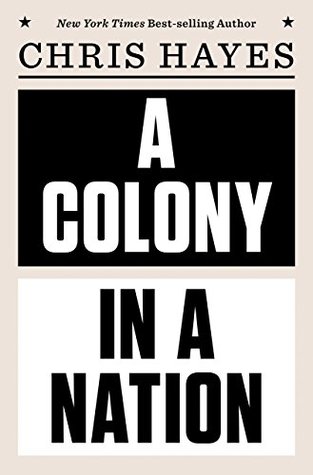More on this book
Community
Kindle Notes & Highlights
Nearly one out of every four prisoners in the world is an American, though the United States has just 5 percent of the world’s population.
If you move in affluent, white, elite social circles, you probably know these statistics but never really see them in action. In the world’s most punitive criminal system, the application of punishment is uneven in the extreme. Black men aged 20 to 34 without a high school degree have an institutionalization rate of about 37 percent. For white men without a high school degree, it’s 12 percent, or nearly three times lower.
THIS BOOK MAKES A simple argument: that American criminal justice isn’t one system with massive racial disparities but two distinct regimes. One (the Nation) is the kind of policing regime you expect in a democracy; the other (the Colony) is the kind you expect in an occupied land.
we as a people have created the Colony through democratic means. We have voted to subdue our fellow citizens; we have rushed to the polls to elect people promising to bar others from enjoying the fruits of liberty. A majority of Americans have put a minority under lock and key.
We have not ended racial caste in America; we have merely redesigned it.”
In the Nation, there is law; in the Colony, there is only a concern with order. In the Nation, you have rights; in the Colony, you have commands. In the Nation, you are innocent until proven guilty; in the Colony, you are born guilty. Police officers tasked with keeping these two realms separate intuitively grasp of the contours of this divide: as one Baltimore police sergeant instructed his officers, “Do not treat criminals like citizens.”
Thirteen years before the Declaration of Independence, British member of Parliament William Pitt defended the rights of Englishmen to privacy in their own home. He declared: “The poorest man may in his cottage bid defiance to all the forces of the Crown. It may be frail; its roof may shake; the wind may blow through it; the storm may enter; the rain may enter; but the King of England cannot enter—all his forces dare not cross the threshold of the ruined tenement!”
This is what “the law” looks like in the Colony, where real democratic accountability is lacking, when the consent of the governed is absent or forsaken or betrayed, and when the purpose of policing and courts isn’t the maintenance of safety and provision of justice but rather some other aim. In north St. Louis County that aim is to produce revenue, the same aim of the British Empire’s customs regime in the American colonies.
The typical cadet training involves sixty hours on how to use a gun and fifty-one hours on defensive tactics, but just eight hours on how to calm situations without force.
Policing in an environment awash in guns is fundamentally different from policing in one that isn’t. In every interaction in the simulator, I wondered when the gun would appear, and when I’d find myself reaching for my holster. Obviously the training environment and the desire to expose me to as much “action” as possible exaggerated the fear of the ever-present gun.
The Nixon campaign in 1968, and the Nixon White House after that, had two enemies: the antiwar left and black people. You understand what I’m saying? We knew we couldn’t make it illegal to be either against the war or black, but by getting the public to associate the hippies with marijuana and blacks with heroin, and then criminalizing both heavily, we could disrupt those communities. We could arrest their leaders, raid their homes, break up their meetings, and vilify them night after night on the evening news. Did we know we were lying about the drugs? Of course we did.
Urban seediness was the opposite of suburban tranquility. In fact, the suburbs were where you fled to escape seediness, to protect your children from it. The suburbs were clean, and the city was dirty. The suburbs enjoyed empty streets, while city streets hosted vagabonds and drug addicts. More than anything else, the suburbs were orderly—with houses, lawns, people, and cars all in their place. The city was disorderly, a tangle of people and noise and unclear rules.


